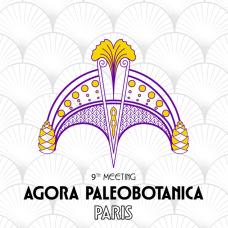Time World 2022 Paris - Global Congress on Construction

TimeWorld

TimeWorld
From June 29 to July 1, 2022, Sorbonne Université will host the next TimeWorld conference. Industrialists, researchers, academics, students and the general public will cross expertise, experiences and points of view to answer together the questions-challenges on the theme of construction.
How to build a lunar base ? An interstellar ship ? Is reality a construction of art? How is a paranoid delusion constructed? How to build a phylogenetic tree, a termite mound or a coral reef? How to build inspired by the living? Can we reconstruct an extinct species? How to deconstruct the wild to domesticate it? How to build an epidemiological cycle? How to build a public health policy? Should we deconstruct language and our beliefs? How to construct a detective story? How to reconstruct the time of the living?
TimeWorld brings science closer to citizens through the history of science and current and prospective questions. It is an opportunity for researchers, industrialists, academics, artists and the general public to meet. It is a space for sharing knowledge, expertise, and points of view, where research in the basic sciences is combined with the human and social sciences to offer everyone something to think about. TimeWorld encourages curiosity, open-mindedness, critical thinking and debate. At the center of the stage, researchers expose their work to a wide audience, including the world of industry.
1er juillet 2022, 16h - 16h45 — Amphi 34B
Reconstructing our history requires the interaction of several naturalist disciplines and cannot be reduced to a neontological approach based mainly on the living. Like any evolutionary history, it implies a paleontological study based on anatomy, the comparison of structures in fossil and modern beings as Buffon so well demonstrated. Man is also an integral part of biodiversity and throughout his history, his relationship with other biotas in various climates has been decisive for his survival; in particular his locomotor, dietary and cognitive behaviors studied with increasingly fine techniques of observation and measurement. The “time” factor has been essential in this progressive and bushy construction carried out over nearly 10 million years.
Signing (1er juillet 2022, 16h45 - 17h30) :
Et le singe se mit debout…: Aventures africaines d’une paléontologue
Dédicace : Paléontologie d’aujourd’hui
1er juillet 2022, 17h30 - 18h15 — Amphi 24
Bone structures are made up of a matrix containing proteins (collagen) and minerals (hydroxyapatite). Within this matrix are pockets containing bone cells (osteocytes) and cavities containing blood vessels. These basic elements can be organized in very different ways, so that the organization of bone structures varies both during the growth of organisms (ontogeny) and during the evolutionary history of groups. The diversity of the organization of bone constructs will be illustrated with case studies taken from synapsids (a group that includes mammals), sauropsids (turtles, lizards, crocodiles, birds) and amphibians. A debate on the significance of this diversity (functional adaptation versus historical inheritance) was initiated in 1849 by J. Quecket and is still going on. Our research group has tried to shed some light on this issue by using statistical methods that take into account phylogeny (kinship relationships between organisms). Our results show that these factors are not mutually exclusive: the diversity in the organization of bone constructs is the result of both functional adaptations AND historical inheritance.



